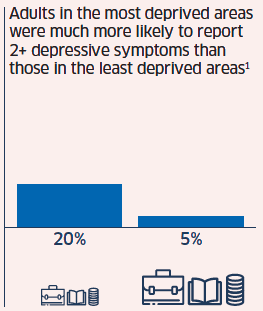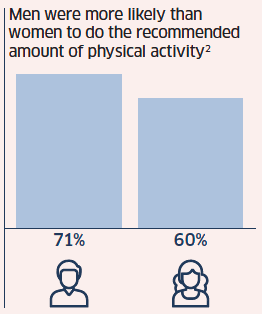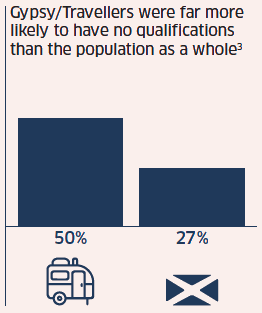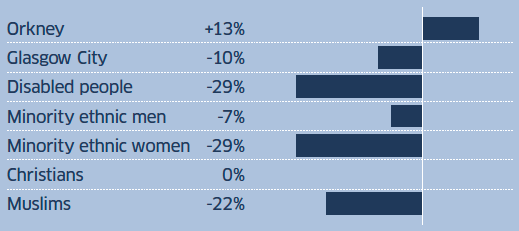Tackling inequality: guidance on making budget decisions
Informal guidance for policy makers on equality and human rights budgeting. The booklet challenges policy makers to systematically think through 6 key questions to identify ways in which budget decisions could be improved to advance human rights and address inequalities. Budget decisions include both those made about the money we spend and decisions about how revenue is raised.
Question 2 What do you know about existing inequalities of outcome in relation to the budget area?
Thorough use of evidence is essential to making good budget decisions that tackle inequality. Without the evidence about how different people are affected by the area that the budget is addressing (what their current outcomes are), it is impossible to begin to understand the impact that a budget decision might have on inequality. Considering relevant evidence is also a requirement under Scotland’s Specific Public Sector Equality Duties. Remember that evidence can take a variety of different forms. It includes not only statistics but also qualitative evidence such as that gathered from interviews, focus groups or consultations.



We need to think about the types of discrimination or disadvantage that people can experience on account of their protected characteristics*, as well as their socio-economic status and where they live. EHRC’s report, ‘Is Scotland Fairer?’ sets out some of the key inequalities of outcome across different areas of life. Scottish Government’s Equality Evidence Finder also provides a range of evidence across policy areas.
Example:
If we only look at the average for Scotland the picture can look good:
- Scotland currently has very high employment rates with 74.1% of people aged 16-64 in employment.
However, if we look at this for different groups the picture is different:
- The employment rate for disabled people is 46%.
- While 67% of minority ethnic men are in employment this falls to just 45% for minority ethnic women.
- Around 74% of people who identify as Christian are in employment compared to 52% of Muslims.
- While 88% of working-age people in Orkney are employed this falls to 64% in Glasgow City.4
If a new employment policy and budget is designed without explicit consideration of these existing inequalities of outcome it is unlikely to reduce inequality and could even further entrench differences between groups. Thought needs to be given to the specific barriers different groups or places face and then how to tailor the policy and resulting budget to advance equality.

* The protected characteristics set out in the Equality Act 2010 are:
age; disability; gender reassignment; marriage and civil partnership;
pregnancy and maternity; race; religion or belief; sex; and sexual orientation.
“Improvements in Scotland’s overall wellbeing can’t be achieved without a concerted effort to improve the lives of those who are left behind. Using outcomes to track differences between groups in society is a key mechanism for improving decision-making and shifting the dial for those who have a right to better lives.”
Jennifer Wallace
Head of Policy, Carnegie UK Trust
Contact
Email: Gillian.Achurch@gov.scot
There is a problem
Thanks for your feedback